The Dutch aHUS patients’ conference is being held in Nimegen and the participants are gathering at the Fletcher Park Hotel Val Monte for the talks. The attendees are a mix of patients and clinicians from the Netherlands and around the world
The Conference is opened by its Chair Dr Hans Bart of Nierpatienen Vereniging Nederland. He noted that some participants had traveled far to get here but said so is the journey long for clinicians and patients to get a clinical and cost effective treatment. This day is about just that.

Dr Hans Bart
CUREiHUS – presented by Dr Nicole van de Kar of Radbourd UMC
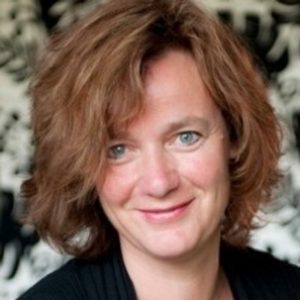
Nicole is pediatric nephrologist at Radbourd University Hospital.
The key points made were
- 10 to 15 aHUS incidence per year in The Netherlands
- aHUS is a form of TMA and there are Primary and Secondary types.
- TMA diagnosis cause is a challenge and aHUS is the result of exclusion of others
- Overactive and uncontrolled Complement mediates aHUS
- The alternative pathway of Complement is the mainly implicated in aHUS.
- Eculizumab reimbursement originally for 4 years but NL clinicians worked on a national protocol
- A Dutch Guideline was developed and committee decision process is at the heart of it.
- Evidence is building on a restrictive treatment regimen with tapering and stopping of eculizumab with some success over different mutations including CFH which is high risk.
- Rescue rather than prophylactic therapy for aHUS in kidney transplants has been introduced
- The Guideline is being monitored and evaluated by the CUREiHUS study.
- Patient data as well as clinical data is included.
- 34 patients out of 53 on eculizumab by 2018 ( 11 at study start ) are now part of the study 1 standard 10 tapered and 21 withdrawn ,8 overall relapsed , mostly CFH patients. But the majority of non relapsing patients were also CFH.
- Saving 17 million euro
- Collaboration works and pays off
More information about CUREiHUS can be found on its website click here
Next speaker Linda van Saase LL.M of Dutch National Health Care Institute then talked about “Funding Expensive Medical Drugs”
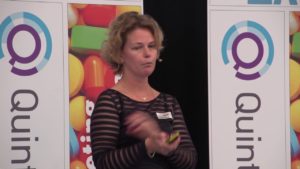
The key points emerging from the talk were:
- the Institutes role is in the decision and advice to the Health Minister
- Is it necessary? is it accessible? is it affordable?
- Dutch is an insurance based healthcare system
- Horizon scanning – anticipating high impact – difficult decisions
- Only some drugs will be assessed based on 4 criteria – including clinical effectiveness/cost effectiveness
- Reference values based on burden of disease measured by quality of life
- A review process involves patients – from scoping to Ministers decision
- Licensed indication eculizumab , 360,000 euro per QALY
- Dutch guideline improved cost effectiveness
- Decision made – “More Research.” but with positive reimbursement advice
- Stop start criteria, dosing management needed in practice but not easy to do
- An indication committee does it
- Data collection is vital
- It is a challenge
An aHUS patients perspective was given by Wim Altena
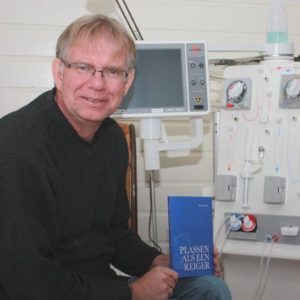
Wim’s made the following points:
- patients in NL are involved in the health processes
- he has much familial connection with aHUS
- he has natural disinclination towards “institutions”
- he supports CUREiHUS because it results in patients (humans) getting treatment when needed
- it is important to have an open mind
- it is important to have positive health – and its 6 dimensions
- Sharing knowledge around the world is important
The conference adjourns for lunch
After lunch
Caroline Duineveld Ph D Radbourd UMC talked about “Pregnancy and Eculizumab”

Caroline made the following points.
- aHUS triggered by pregnancy 1 in 25000 pregnancy cases, usually second and post -partum, 50% CFH
- HELPP, Pre-eclapsia, Hypetension, Placental abruption TTP make diagnosis of aHUS harder
- PEX not effective in 80% of aHUS pregnancies
- Eculizumab effective but data is very small
- Pregnancy decision in a known carrier needs pre-conceptional counselling and also depends on level of kidney function
- Risks have to assessed. Some time prophylactic eculizumab may be prescribed
- Heredity is an issue and aHUS is not just down to genetic predisposition
- Eculizumab affect on baby , limited data, no adverse effects, but it can pass the placenta. Higher dosing may be needed. Treatment with anti-biotics post partum
- Eculizumab improves outcomes for pregnant aHUS mothers
“Pharmacokinetics and pharmacodynamics of eculizumab” is the subject of the next talk given by Rob ter Heine PhD pharmacist at Radbourd UMC
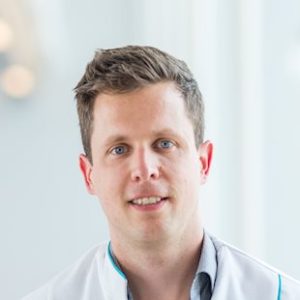
The key points made by Rob were:
- Pharmacokinetics -What the body does to the drug
- Pharmacodynamics – What the drug does to the body
- Doses different for different people
- An effective concentration of eculizumab needed for stopping haemolysis
- Eculizumab may be over dosed- one dose fit all rather than personalised.
- Model-informed precision dosing is on its way!
- a mathematical model will be developed for eculizumab and strategies evaluated.
- If part vials needed intervals can be adjusted
- More people can be treated with sufficient drug
The final talk was about “Measuring Eculizumab levels in the blood” and presented by Dr Elena Volokhina also of Radbourd UMC.
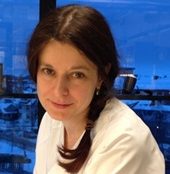
Elena raised the following key issues:
- Complement is a part of the innate immune system
- Methods to guide eculizumab individualised treatment lacking- measuring eculizumab measuring complement
- how much complement in blood and does it block complement
- Sampling of anti human IgG is possible
- Using that eculizumab was measured on patients on weekly intervals and over dosing was observerd by week 4
- Similarly with patients on two week intervals over dosing was evident but one patient appeared under dosed
- Even with 3 and four week intervals many patients achieved optimum dosing and some remained overdosed but more became under dosed.
- Measuring complement activation requires another method using anti-C9 neoepitope on the C5b-9 when active (not just C5) , overdosing with no activation was evident.
- Extension of intervals is possible and safe
The Chair then rounded up the meeting and with the closing remarks the conference came to a close.
The alliance’s overall observation was that this aHUS Conference was different to earlier aHUS Conferences . Less basic education about the Complement system, demonstrating how much things have moved on in the world of aHUS and its treatment. Every topic chosen built on others in the agenda. The aHUS patient group and the collaborating clinicians are to be applauded (and were loudly).

